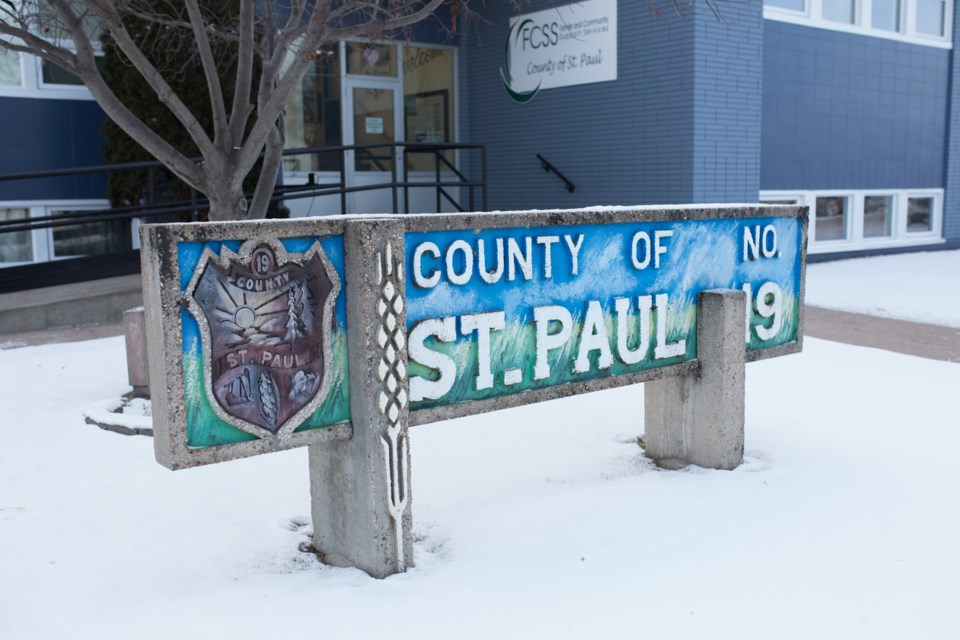ST. PAUL – The County of St. Paul approved its 2024 Municipal Operating and Capital Budget on April 23 during its monthly Public Works meeting.
According to the budget narrative presented to council, the County is expecting to pay $31.07 million in operating expenditures and $9.9 million in capital expenditures.
Operating expenditures are used to run the County’s daily operations, such as public works services, which typically take up over half of operating expenditures.
Capital expenditures are used for the purchase or maintenance of County capital equipment, or used for fire or waste reserves, for example.
Other expenses total $1.6 million, which includes $809,840 for capital debentures repayment, and replacement of its various reserves at $747,100.
Overall, the County budgeted total expenditures at $42.6 million, compared to $38.6 million in 2023. Most of the $4 million increase is attributed to an increase in operating expenditures, which increased by about $2 million, as well as capital expenditures, which increased by about $1.7 million.
How is the County going to pay for this?
According to the budget narrative, the County is expecting $36.7 million in both operating and capital revenues – a decrease of $1.9 million from what the County budgeted last year. Most of the County revenue comes from taxes.
Other sources of revenue come from the County pulling $3.2 million from its various reserves, and $1.7 million from its “Reserve for Future Expenditures (2024 Capital).” Last year, according to the County’s Budget 2023, it pulled less than $1 million from its reserves.
Overall, the County expects $42.6 million in revenues, resulting in a surplus of $14,890.
Reeve Glen Ockerman says some of the loss of revenue includes the permanent closure of the Lindbergh salt plant in late 2022.
“And we didn’t have as many grants,” he adds. “We [also] had a big hit on our MD Foundation,” or seniors housing, says Ockerman. The County’s 2024 budget expects revenue from the MD of St. Paul Foundation to go down from $162,834 to $104,524. This means, “We’ve got to start committing more money to [MD Foundation],” to maintain service levels, says Ockerman.
The MD of St. Paul Foundation manages low-income housing and rental programs for seniors, as well as families.
Ockerman says the County is also still adjusting to paying for policing.
In 2019, the Government of Alberta mandated all municipalities to partially fund policing. In 2023, the County’s contribution went up to $500,723 from $333,580 in 2022. The County increased taxes to cover this.
On top of the loss of revenue and downloading of services from the provincial government, Ockerman says that due to increased inflation, there are increased prices in expenditures, offering an example as the cost of fuel, which ultimately leads to increased costs for the County’s operations.
Ockerman also spoke against the carbon tax, stating the direct and indirect costs to the County led to more expenditures.
What happens now?
Following the County’s 2024 budget approval, taxes will go up by 4.75 per cent, says Ockerman. The number is consistent with the anticipated 5 per cent increase following the County’s approval of its interim budget in December 2023.
RELATED: County of St. Paul anticipates five per cent tax hike
“The tough part of the budget... is we know people are really, really struggling right now,” acknowledges the reeve, explaining that with the increased costs of living, taxpayers may already be having trouble paying mortgages and putting food on the table.
“So, I’m sure not happy about [the budget],” says Ockerman. “We’re even seeing the cuts in services... cutting wherever we can... because we just can’t afford it.”
Lack of money also aggravates ongoing challenges like equipment replacement.
“Do we replace some of the equipment? Or are we going to try and fix it?” he mused. The challenge with fixing equipment is that while it may be cheaper in the short term, it can cost more in the long run – as prices of new equipment continue to increase.
“And I don’t know how much longer we can play this game of never, ever replacing too much [equipment],” says Ockerman. For example, the County only bought a new dozer because “we had to,” due to the lack of equipment.
The County is also facing challenges in manpower, while trying to maintain the same level of services it provides, for example with road maintenance.
“There’s no extra money around anymore,” to support things like local events, he says.



